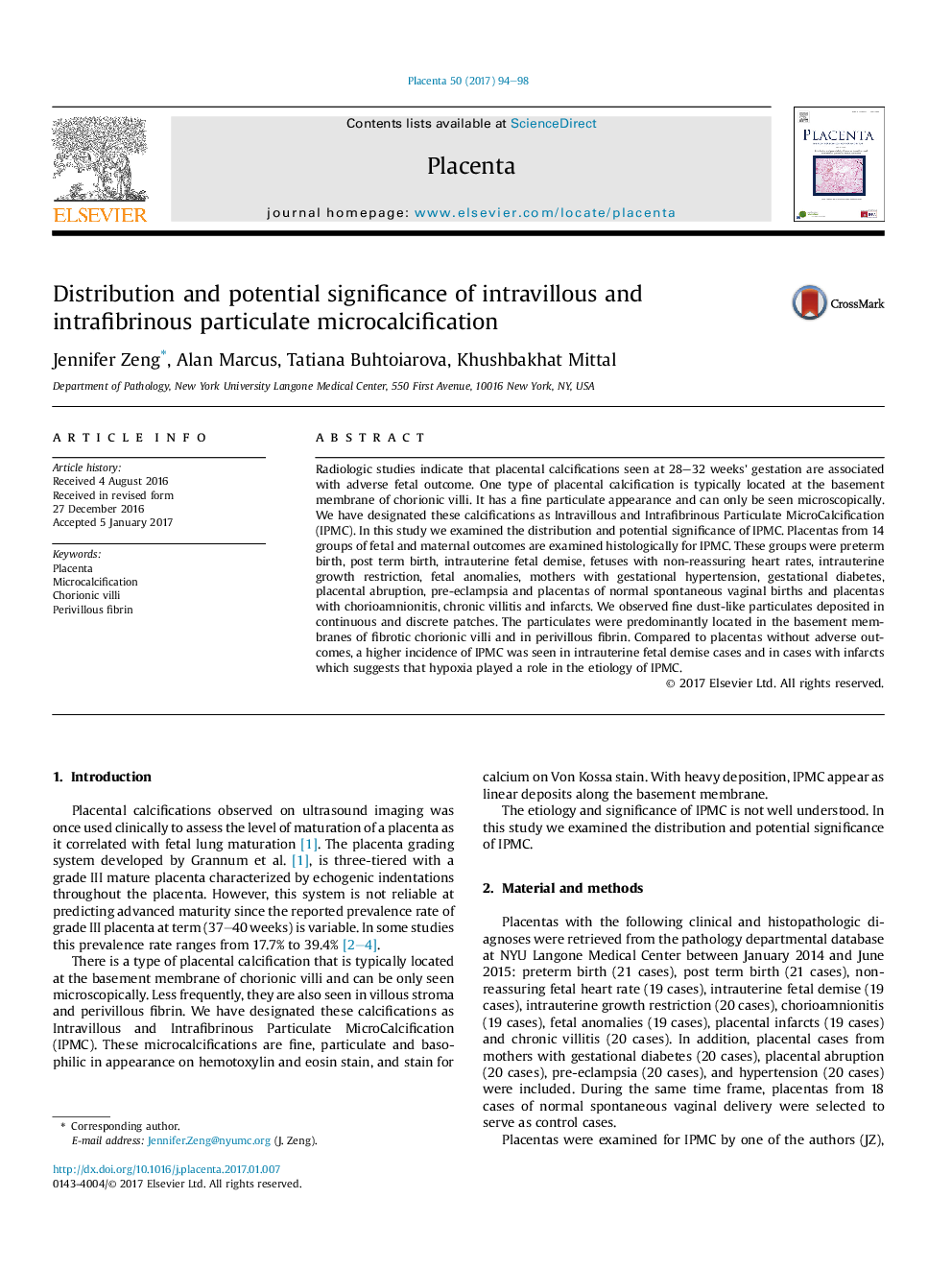| Article ID | Journal | Published Year | Pages | File Type |
|---|---|---|---|---|
| 5586047 | Placenta | 2017 | 5 Pages |
Abstract
Radiologic studies indicate that placental calcifications seen at 28-32 weeks' gestation are associated with adverse fetal outcome. One type of placental calcification is typically located at the basement membrane of chorionic villi. It has a fine particulate appearance and can only be seen microscopically. We have designated these calcifications as Intravillous and Intrafibrinous Particulate MicroCalcification (IPMC). In this study we examined the distribution and potential significance of IPMC. Placentas from 14 groups of fetal and maternal outcomes are examined histologically for IPMC. These groups were preterm birth, post term birth, intrauterine fetal demise, fetuses with non-reassuring heart rates, intrauterine growth restriction, fetal anomalies, mothers with gestational hypertension, gestational diabetes, placental abruption, pre-eclampsia and placentas of normal spontaneous vaginal births and placentas with chorioamnionitis, chronic villitis and infarcts. We observed fine dust-like particulates deposited in continuous and discrete patches. The particulates were predominantly located in the basement membranes of fibrotic chorionic villi and in perivillous fibrin. Compared to placentas without adverse outcomes, a higher incidence of IPMC was seen in intrauterine fetal demise cases and in cases with infarcts which suggests that hypoxia played a role in the etiology of IPMC.
Related Topics
Life Sciences
Biochemistry, Genetics and Molecular Biology
Developmental Biology
Authors
Jennifer Zeng, Alan Marcus, Tatiana Buhtoiarova, Khushbakhat Mittal,
